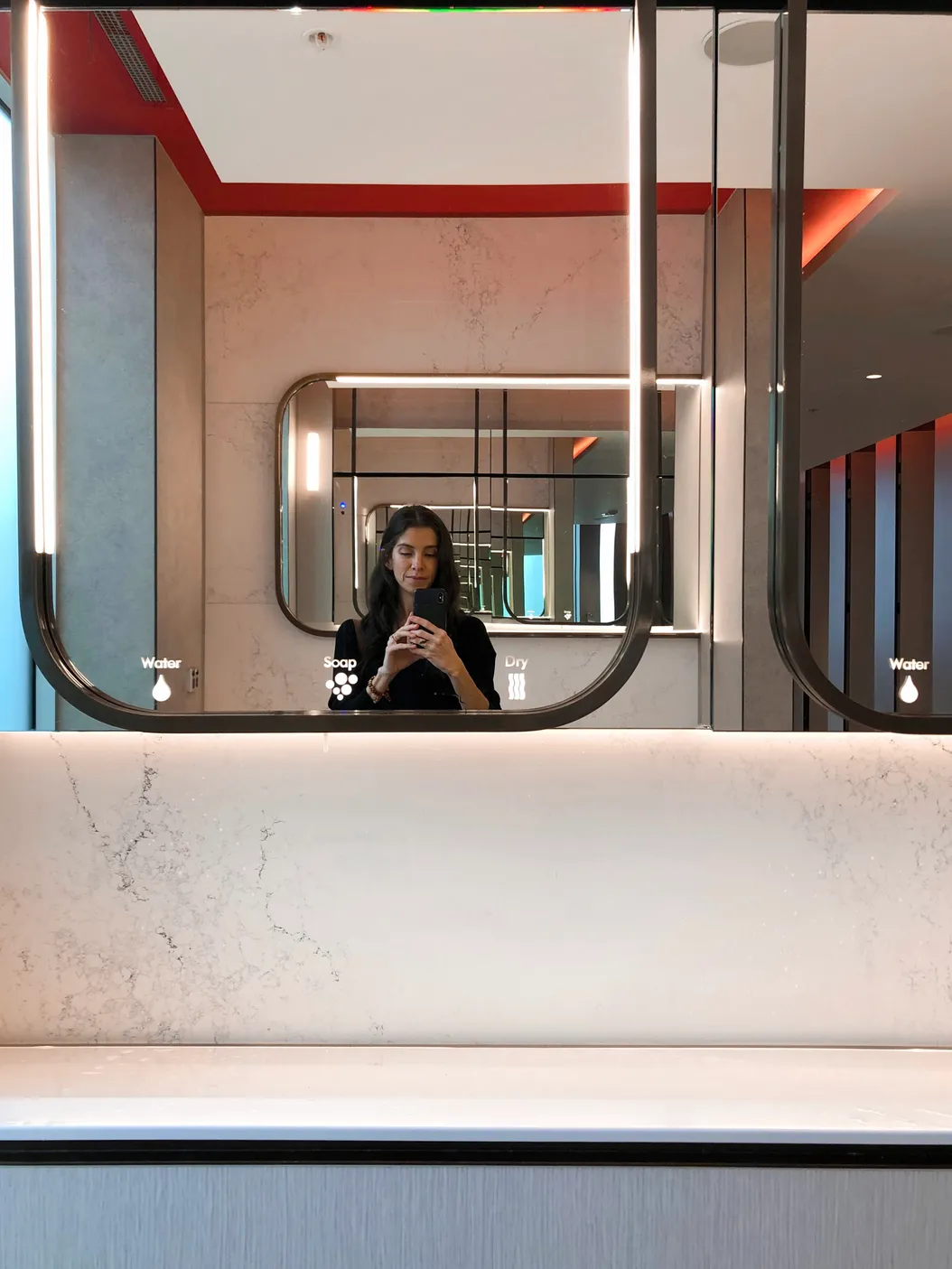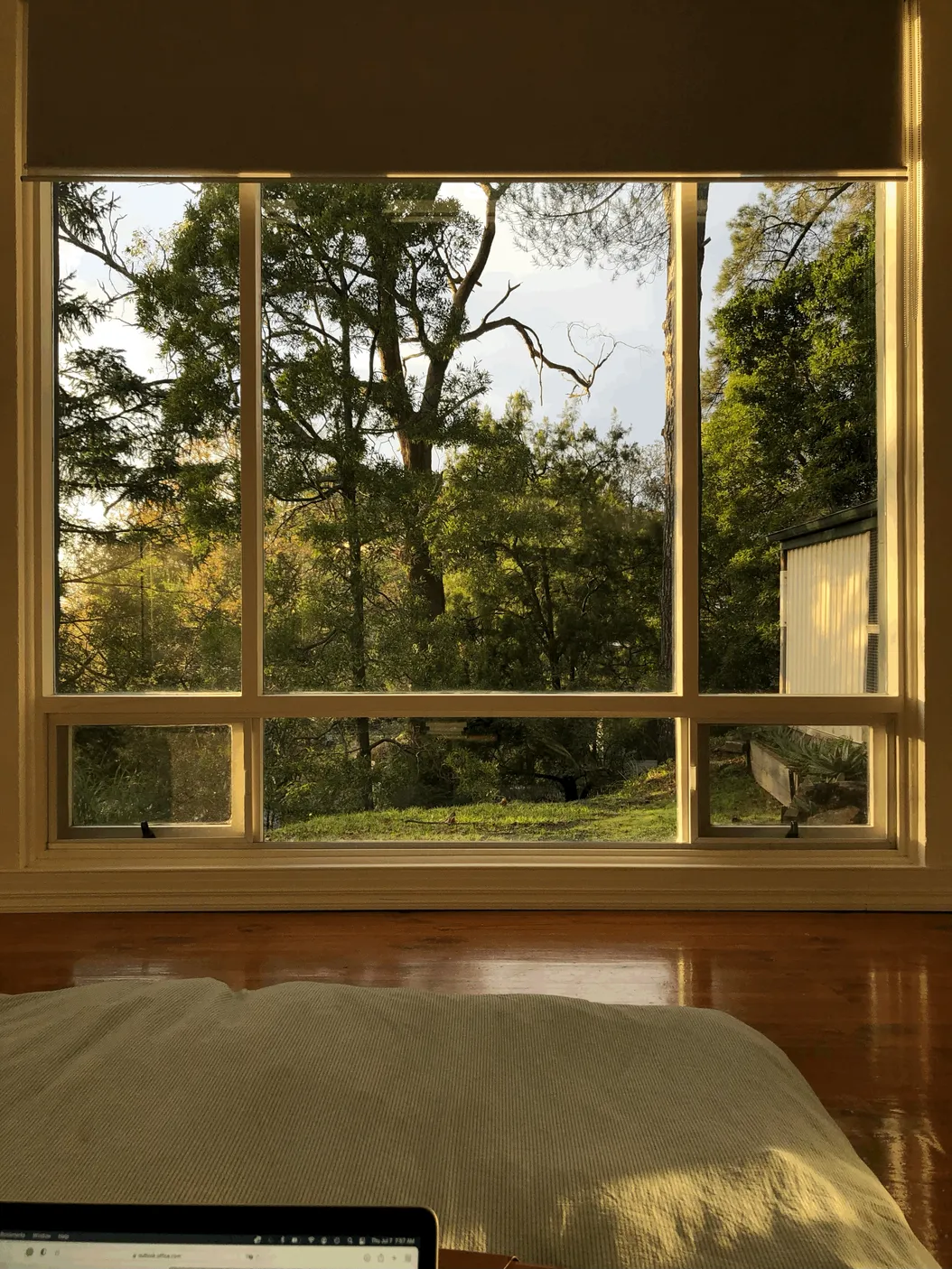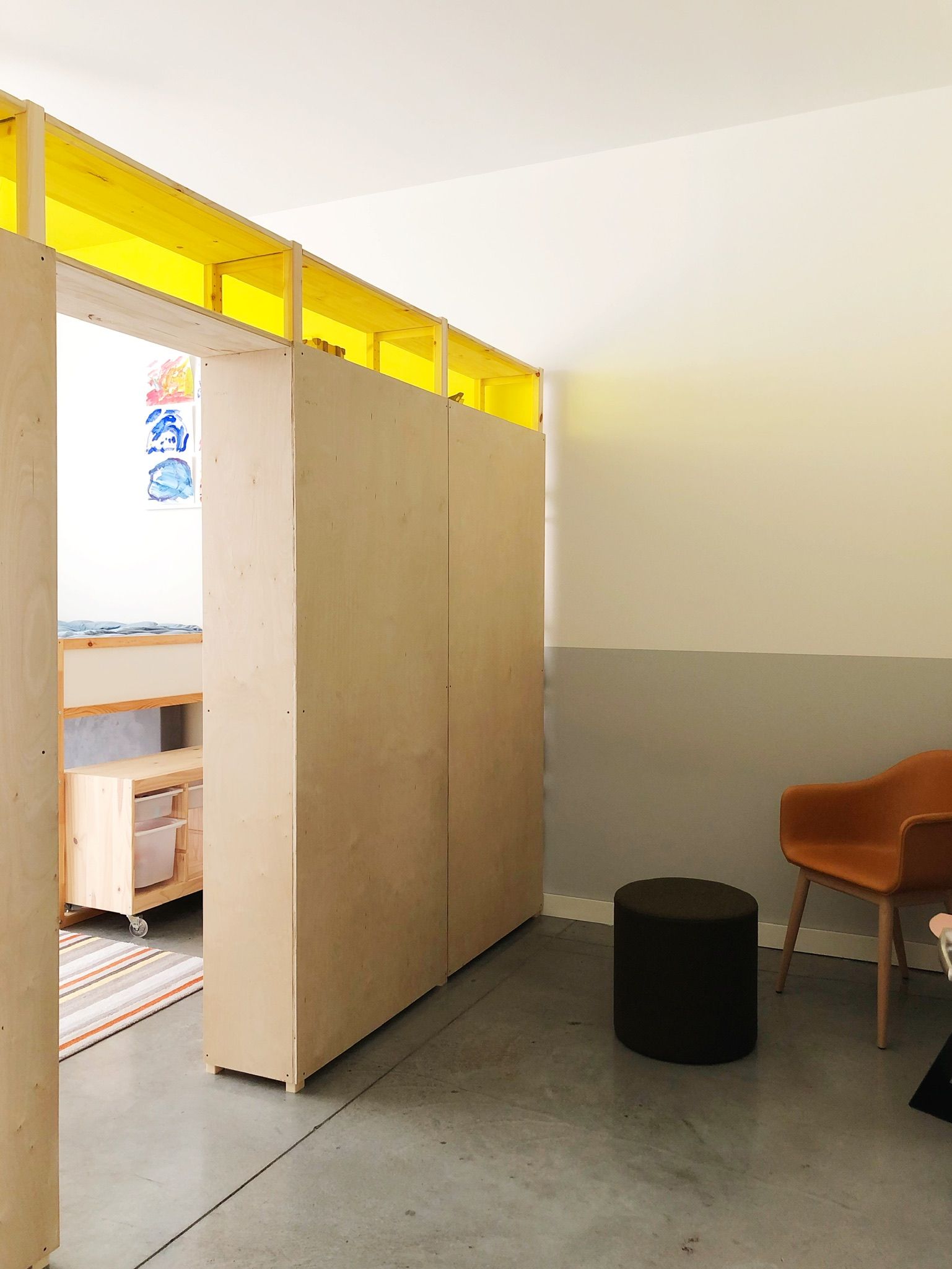
We’re a family of four (two adults and two young kiddos), and we live in a one-bedroom, 1.5 bath condo that’s 1,400 square feet.
It’s been home since 2014 and we’ve adapted the spaces within it to fit our needs in multiple ways, multiple times. Before our first daughter’s birth in 2015, we converted the 5x7ft walk-in closet into her bedroom and lovingly named the new dark and cozy space The Bat Cave. When our second daughter was born, we created a nursery corner in our bedroom while big sis stayed put (it’s fair to note that this single bedroom is enormous, and our ceilings are very high, all of which help). For years we were between old and new furniture and constantly explored different layouts to maximize our enjoyment and ever-evolving needs with kids. After deciding it was time for the girls to have their own shared space (the adults, too), we devised our current arrangement that gives us two “bedrooms”, a dedicated albeit not-private workspace, and our walk-in closet back. All were achieved with custom floor-to-ceiling curtains in the living area and a DIY IKEA hack in the bedroom (using the IVAR system and custom-cut acrylic).
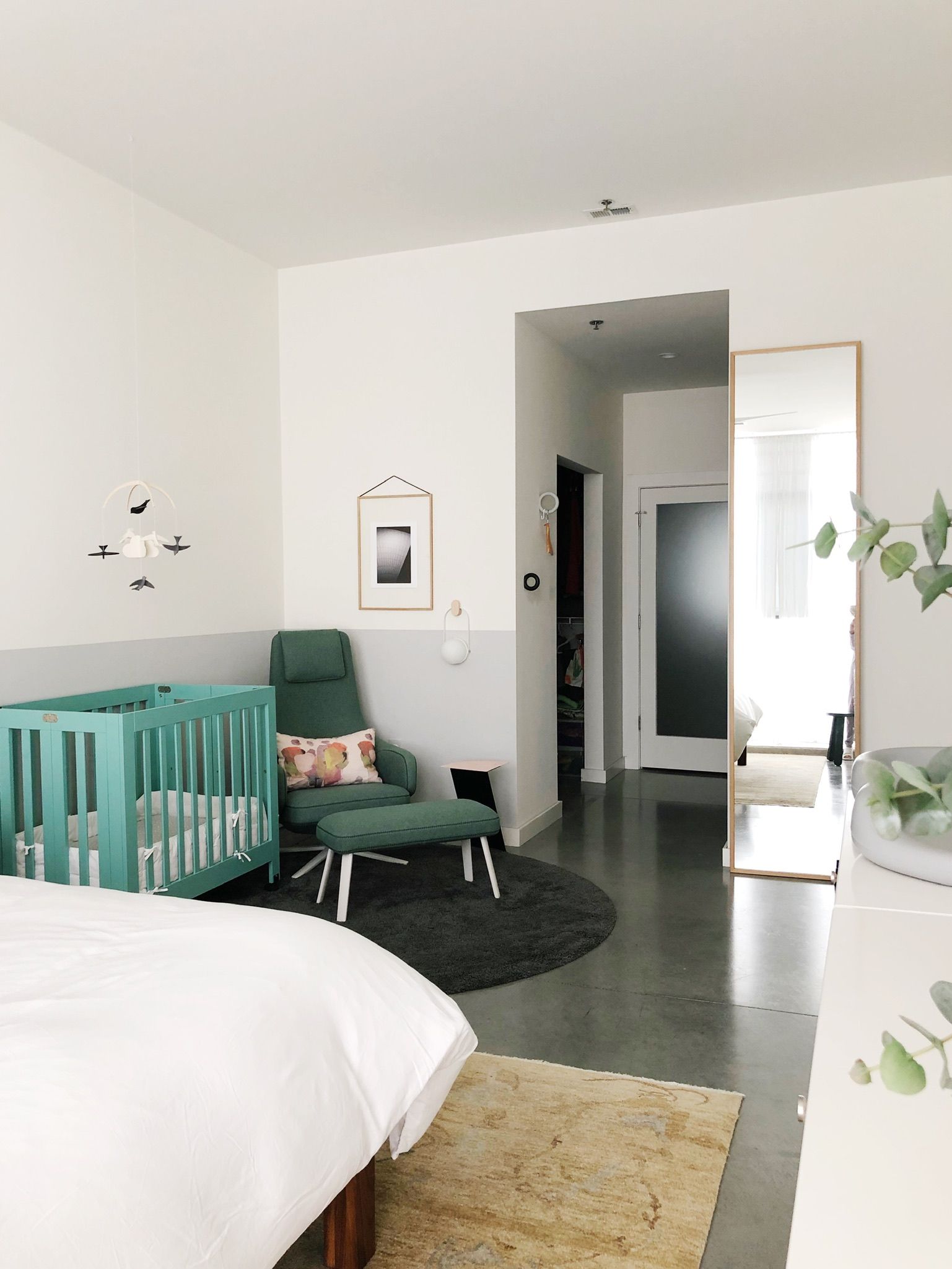
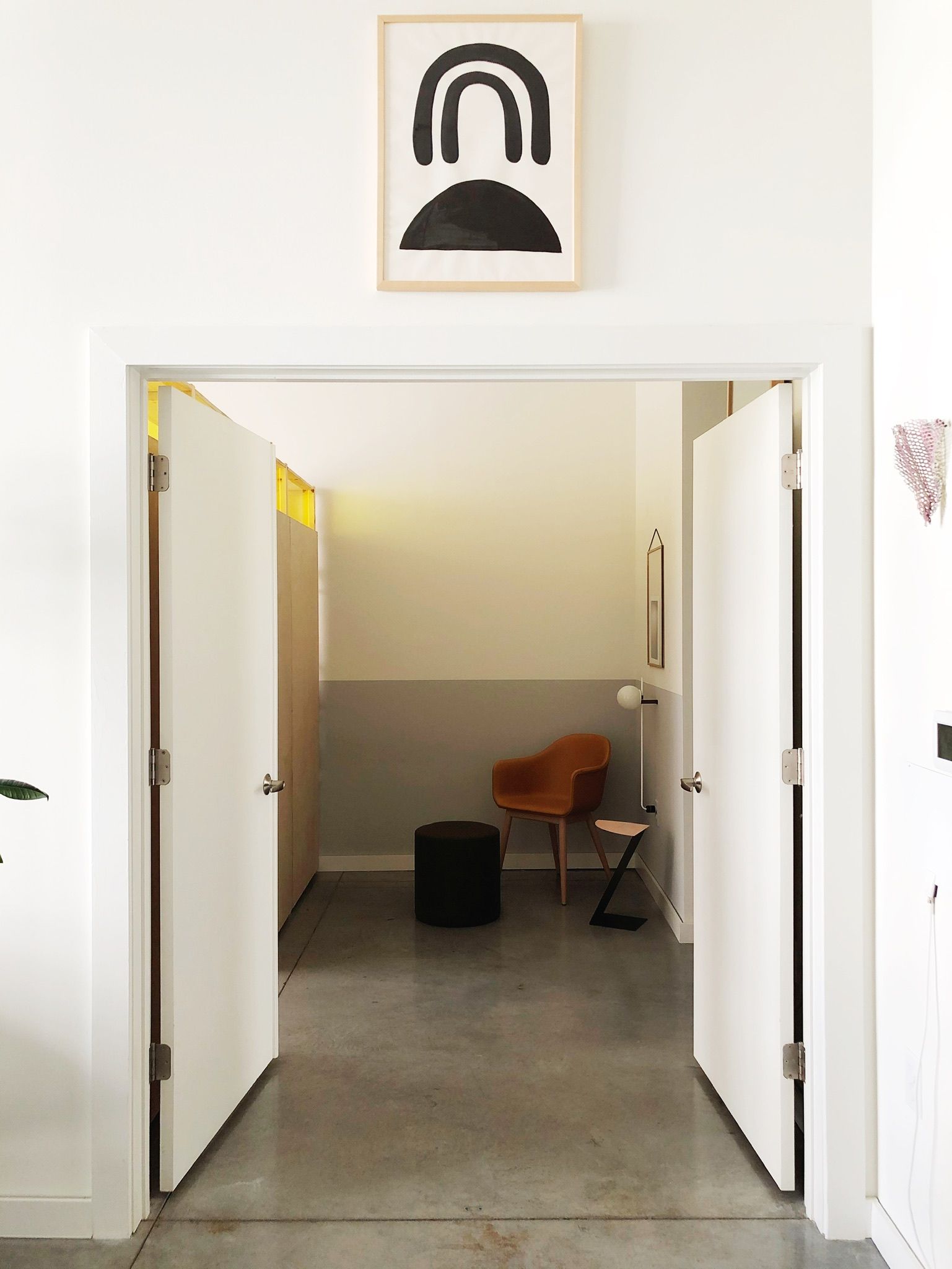
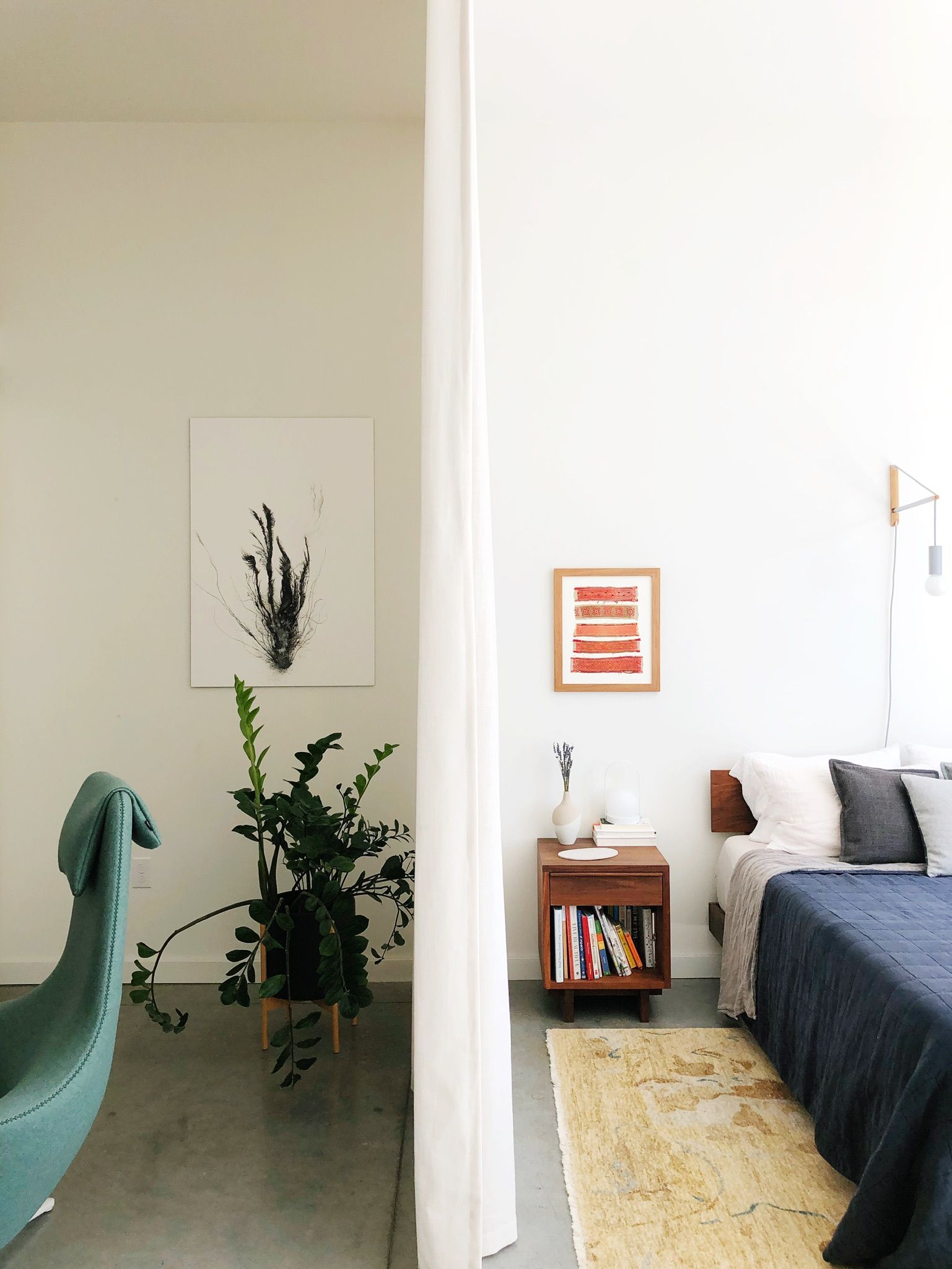
I remember being asked multiple times if we planned to move since our family was growing from three to four. But it never crossed our minds. Our eldest, then three years old, was happy with The Bat Cave; anything more would be superfluous. We loved our home, had plenty of space to work with, and staying put fulfilled many short- and long-term goals. Getting creative and staying flexible was our golden ticket.
Now let’s go back to 2014 when minimalism began moving beyond philosophy to a mainstream design trend. Marie Kondo would soon take the world by storm with her book; the simple Scandinavian aesthetic and approach to materials and function were slowly percolating into the American commercial and residential landscape (see 2021’s Japandi land-rush); and self-proclaimed Maximalists were starting to boil with the annoyance of it all.
I became annoyed because it felt like people were missing the point. I wasn’t interested in putting ourselves in a this vs. that design box when the intention behind our design decisions is so much more meaningful.
In 2015 I opened a store with a design aesthetic that presented itself as minimalist, but I never once called myself or the store “minimalist”. I like things too much. However, plenty of people used the term on our behalf, and I figured that, at the very least, it was a recognizable differentiator in our market area. My goal with the store was to share and celebrate everyday modern designs that were simple, useful, and intriguing enough to fit into any home. Whether you thought you could do modern or not, I wanted these objects to bring aesthetic enjoyment, be useful, and work for you instead of against you. To help make your every day that much better.
That brings us back to the present, or 2020 when how we experience our every day at home was amplified by 1000%. Cue the conversation on multifunctional spaces, multifunctional pieces, and maximizing the use and enjoyment of your home. From the entryway to the backyard, neither nook nor cranny was spared analysis and serious critique, especially if you worked from home and/or have kids.
Looking around our home, I smiled, knowing that we had gone through this process many times and were in a perfect place. Not only did we enjoy our things, but we significantly expanded our square footage - and use of every square inch - without moving homes. I then realized that at the root of my approach to interior objects and design is actually... Maximalism, in the way and the why I maximize my things and spaces.
Popular design culture touts Maximalism to be “more is more”. More patterns on patterns. More colors on colors. More things on things. Undoubtedly, this approach can create a fantastic feast for the eyes when effectively done. But in my ever-pragmatic ways of thinking, the current usage and understanding of the term as it applies to interior design and fashion don’t reach its full potential. Maximalism in design can mean so much more than how something looks!
At the risk of being basic, here’s a basic definition per the Oxford Dictionary:
Maximum
Adjective; as great, high, or intense as possible or permitted
Noun; the greatest or highest amount possible or attained
Adverb; at the most
Within the interior design framework, these definitions don’t make me think of quantities, loudness, and brightness of colors and patterns--or even pushing visual limits. Instead, my mind goes to value propositions...
How can we make the most of something (big or small) in our homes, working for the greatest good?
How can the things and choices we make within our spaces help maximize our daily experiences?
And how can these things and considerations can offer us solutions?
Owners, designers, and builders of tiny homes (RVs, boats, and yachts) offer a great, albeit extreme, example of maximum effort and results. They decide what they need and want, how much room they have to work with, and get creative to maximize their function and enjoyment. Maximalism in this context is very straightforward.
But we don’t have to live in confined spaces to get the most out of them. All that is needed is a desire to go beyond decor labels and ask how our choices serve us. It’s about being thoughtful with space and utility, even if you have all the space in the world. The main driver here is intention, or intentionalism if you must have an ism. Intentionalism spans the entire spectrum of design aesthetics and our personal why. Is it purely functional, beautiful, or both? I believe that most of us seek to have both.
We'll never know our home's true potential until we allow it to adapt and evolve with us. So, go ahead and install a Murphy bed that will transform how you use your room. Use a sitting stool as a side table instead of something that's only good for being a side table. Do as we did and put your baby in a corner or a closet. Sometimes we adapt out of necessity – or calamity! – and sometimes, we calmly take stock and consider a change. Regardless of the motivation, in all moments and spaces, from a temporary studio to a forever house, we should seek to enjoy our objects and our home to the greatest degree possible. Why not?
Make the most of it, and make it work.
